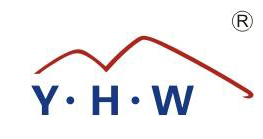Square flat aluminum roof tiles, like other metal roofing materials, are conductive, which raises questions about their interaction with lightning protection systems (LPS) and the safe dissipation of electrical charges. Here’s how they interact and contribute to overall lightning safety:
1. Conductivity and Charge Distribution
Aluminum is a highly conductive material, which allows it to distribute electrical charges more evenly across the surface. Unlike non-conductive roofing materials (such as clay or asphalt), aluminum does not create points of high electrical resistance, reducing the risk of localized heat buildup that could lead to fire hazards.

2. Integration with Lightning Protection Systems (LPS)
-
Bonding to Grounding Systems: To ensure safe dissipation of electrical charges, square flat aluminum roof tiles should be properly bonded to the building’s lightning protection system. This includes:
-
Connecting the aluminum roofing system to down conductors that direct electrical charges safely to the ground.
-
Using appropriate clamps and bonding straps to avoid arcing between the roof tiles and LPS components.
-
-
Air Terminals (Lightning Rods): In many cases, an air terminal network (lightning rods) is installed on the roof. These rods act as the primary points of lightning interception, ensuring that any strikes are safely directed to the grounding system rather than allowing uncontrolled dissipation through the aluminum roof tiles.
-
Avoiding Isolated Conductive Sections: Any discontinuous metal sections (such as decorative elements, vents, or rooftop HVAC units) should be electrically bonded to the main LPS to prevent side-flash or isolated charge accumulation.
3. Preventing Side-Flashing and Damage
-
If aluminum roof tiles are not properly bonded, side-flash can occur, where lightning jumps unpredictably between ungrounded metal components and other conductive building parts. Proper bonding and equipotential grounding minimize this risk.
-
Protective coatings or non-conductive underlayments do not significantly reduce the need for a structured LPS because lightning will still seek the easiest conductive path to the ground.
4. Compliance with Lightning Protection Standards
To ensure safety, installation should comply with international standards such as:
-
NFPA 780 (National Fire Protection Association – U.S.)
-
IEC 62305 (International Electrotechnical Commission – Global)
-
UL 96A (Underwriters Laboratories – U.S.)
These standards specify bonding, grounding, and installation requirements to safely integrate metal roofing with LPS.




 English
English русский
русский Español
Español عربى
عربى















